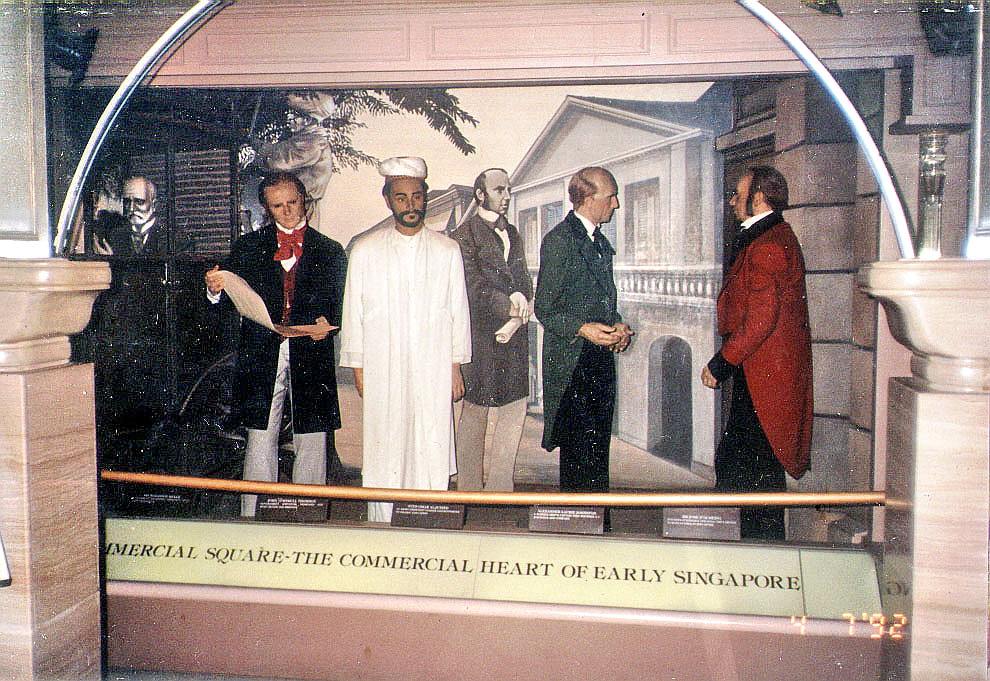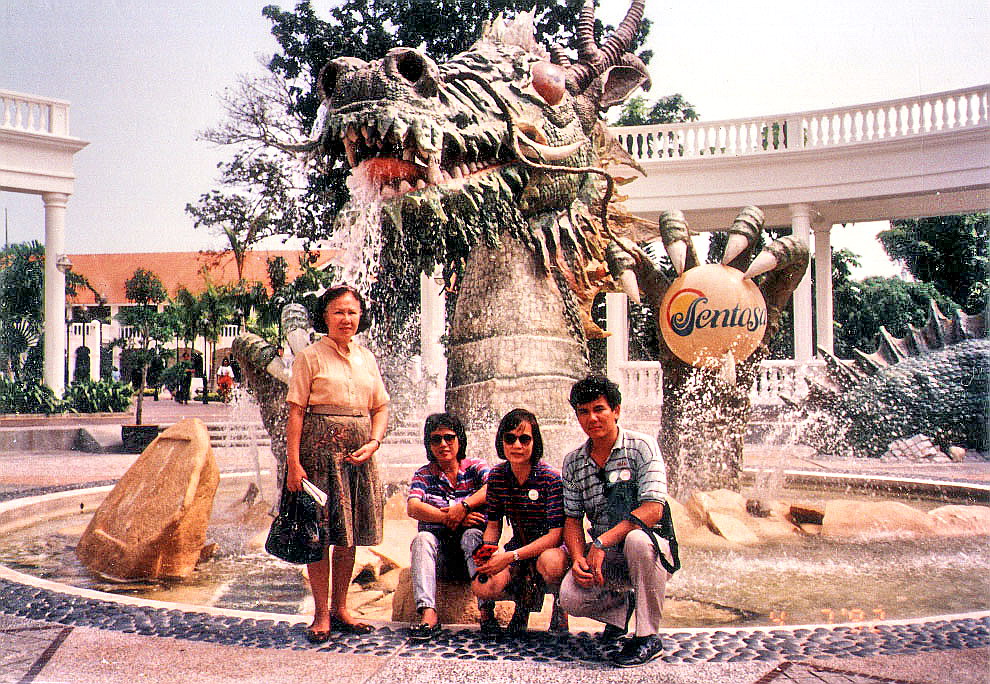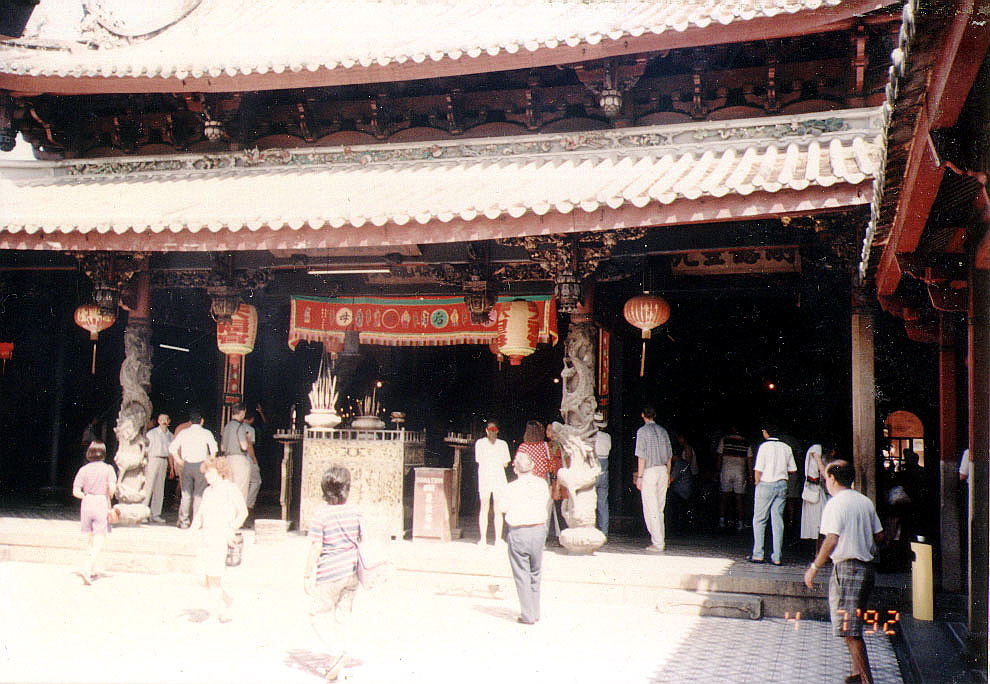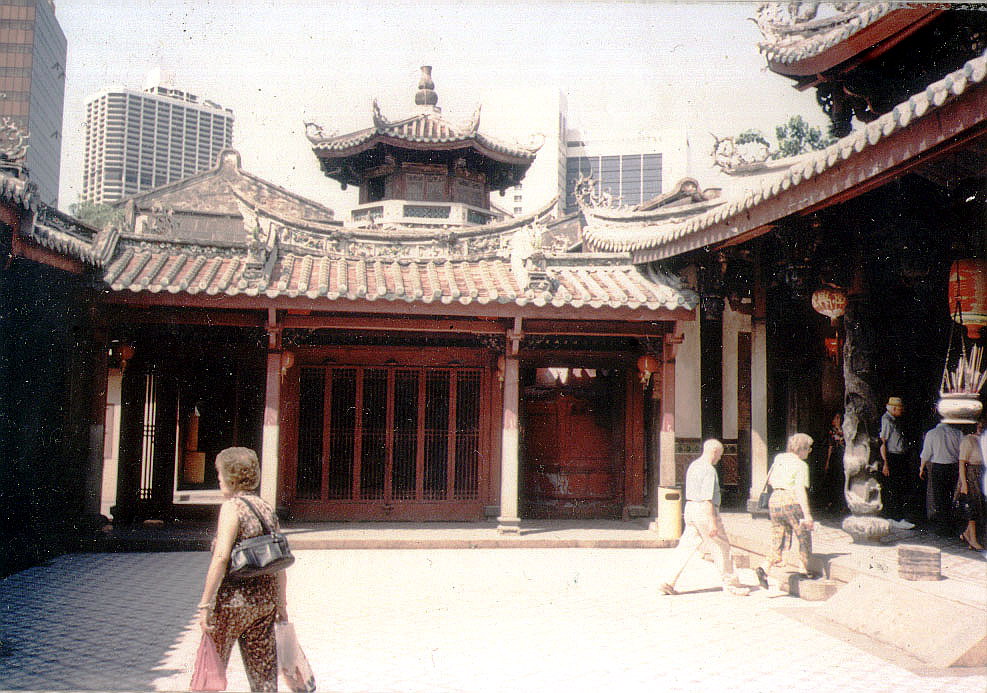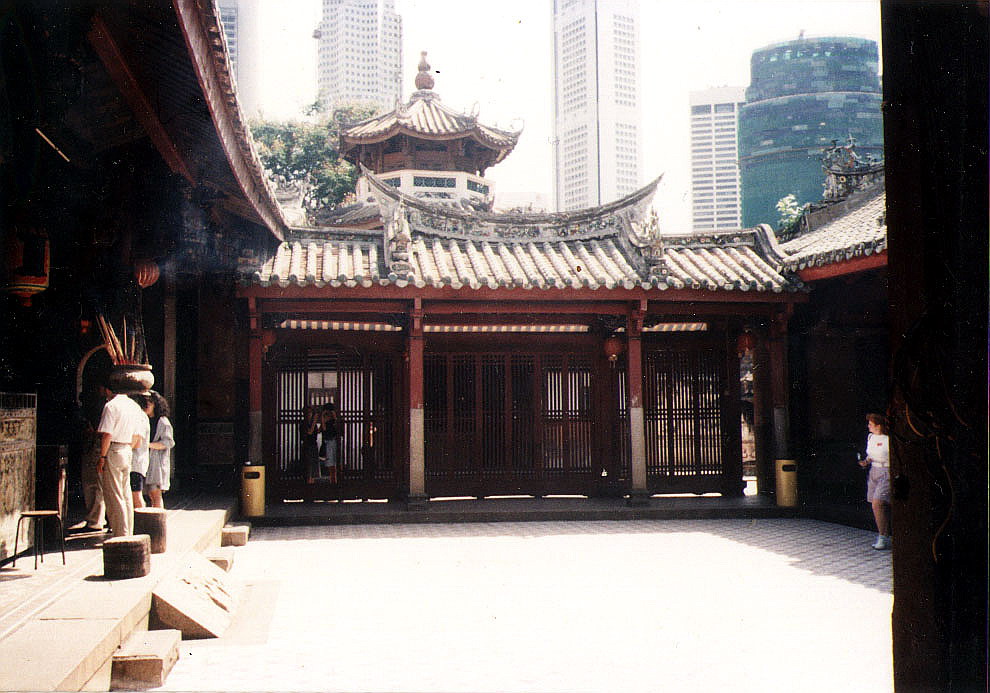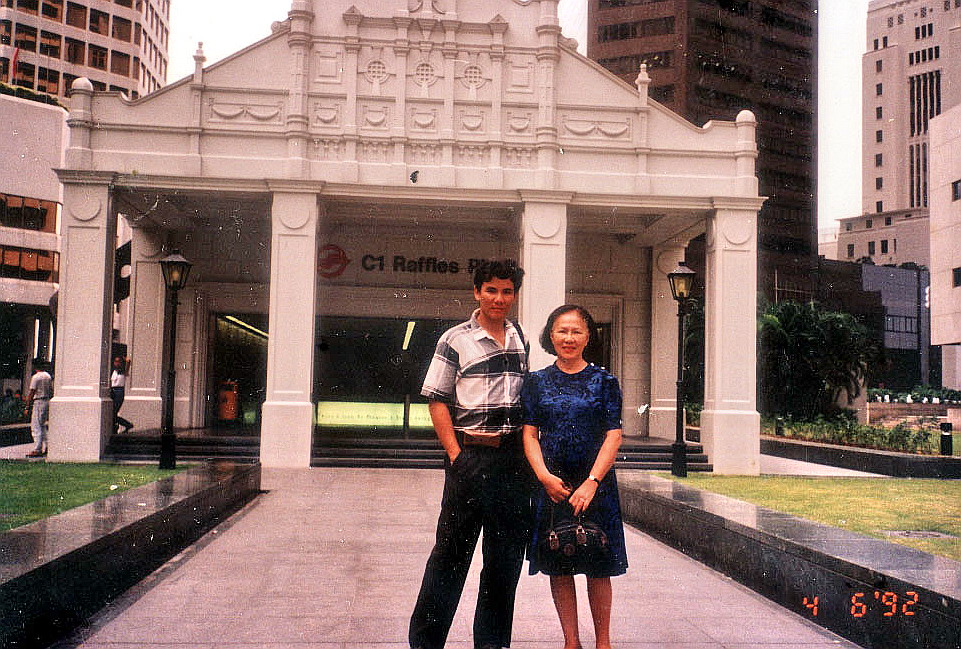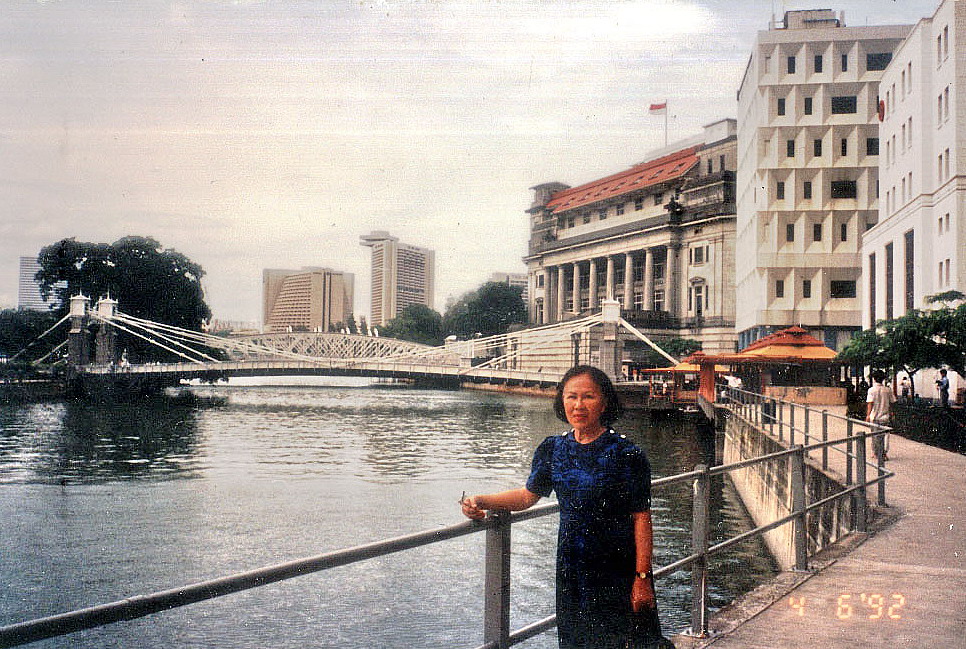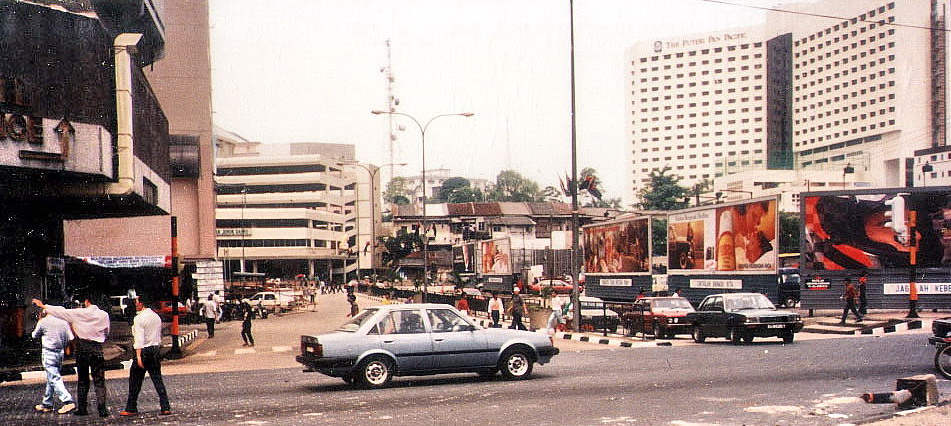Upon arrival at the ferry terminal, we strolled along the Fountain Garden to the eclectic Pioneers of Singapore/Surrender Chambers Museum (opened in 1983).
The Pioneers of Singapore offers a chronological history of the city-state, from the 14th century to the early 20th century, recreated via an animated and narrated tableaux in wax depicting the pre-British period of Malaysian rule, British colonialism, the founding of colonial Singapore by Sir Thomas Stamford Raffles, the Japanese Occupation and the post-colonialist era under Lee Kuan Yew, Singapore’s first Prime Minister.
The Surrender Chambers, which depicts Singapore during the World War II years (1941-1945), captures the humiliation of defeat and the joy of victory through the use of rare audio and visual archive material such as photographs and footage, with realistic wax works recapturing the historical moments of the signing of both the British’s humiliating surrender on February 15, 1942 and the Japanese surrender to the Allies on September 12, 1945.
In 1994, the Pioneers of Singapore/Surrender Chambers Museum was extended to include a section called Festivals of Singapore and the attraction was rechristened “Images of Singapore.” The popular wax tableau Surrender Chambers has now been relocated, from Sentosa’s Images of Singapore Museum, to Fort Siloso.


